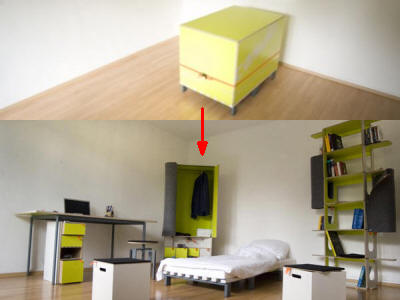A robot that helps IKEA furniture assembly is born

Scandinavian furniture maker IKEA's large furniture is known to be offered at a relatively low price by being assembled by the purchaser himself. However, although it is designed so that even an amateur can easily assemble it, it takes a lot of effort to assemble many parts while staring at the blueprint. A robot to help assemble IKEA furniture has been developed at the University of Southern California, Vitabi Institute of Technology.
Need help building IKEA furniture? This robot learns your preferences and lends a hand. --USC Viterbi | School of Engineering
You can check how it actually helps in the following movie.
Need help building IKEA furniture? This robot learns your preferences and lends a hand. --YouTube
A woman in black is assembling an IKEA bookshelf. A robot that watches over the situation.

After assembling the side plate, the robot faces the side where the parts are placed ...

Grab the next part to use and gently present it to the woman.

When the woman begins to reassemble, the robot already begins to select the parts it will need next.

A robot that gives women more and more necessary parts.


The feature of this robot is that it observes the human beings assembling and learns human tastes. The robot analyzes the video of 20 people assembling the bookshelf in advance, learns the behavior pattern, predicts 'which part the person in front wants to assemble next', and hands over the parts. I will.
Robots that assemble IKEA furniture were already announced in 2018. The robot announced in 2018 assembled the IKEA chair fully automatically, but this time the robot was developed with the theme of 'human-robot collaboration'.
Robots are good at carrying and sorting heavy parts, but humans are better suited for troublesome and delicate tasks such as tightening small screws and finely adjusting and combining parts. And since humans set various orders for actions, it is possible for robots to learn and predict this order to help assemble furniture.
The research team says that this technology can be applied to long-term care support robots such as meal support and preparation in the future.
'Although humans can verbally tell what a robot needs, it's not efficient. We know that robots have some prior knowledge,' said Stephanos Nikolaidis, a member of the research team. We want to be able to guess what humans want based on. '
Related Posts:







